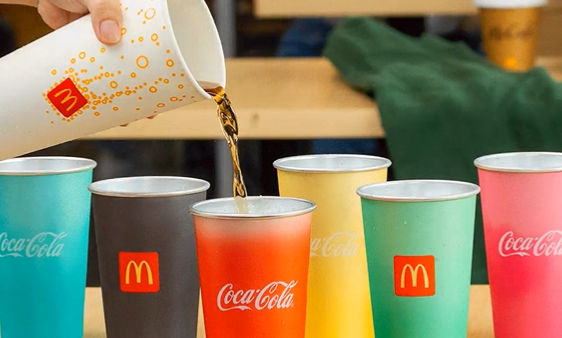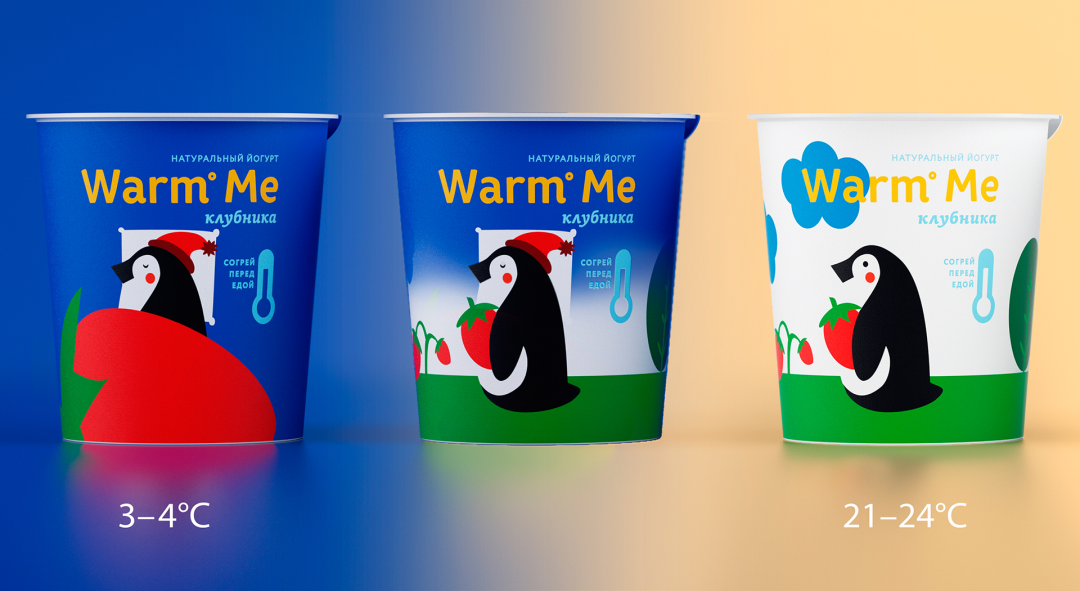What are Mcdonald’s Color Changing Cups?
McDonald’s recently launched a range of limited edition colour-changing cups in Singapore, making the local McDonald’s app gain massive traffic and a hot topic amongst netizens from China, the United States, the United Kingdom, Italy, France and Poland! The demand for these limited edition cups provided Mcdonald’s a marketing strategy to reach more customers and retain brand loyalty while engaging customers in a fun way.
What Makes The Cup “Magical”?
It’s simple yet innovative. The cup is temperature sensitive, allowing a change of colour when cold. The customers note that the process of colour change is visually appealing, fun and innovative. Even an opaque aluminium cup shows the gradual process of rising liquid water levels from the outside!
McDonald’s colour-changing cup uses a unique material called temperature-changing ink on the wall of the cup. The colour change principle of the ink has a foundational component called the thermochromic microcapsule pigments, which are composed of special dyes wrapped in microcapsules. When a specific temperature threshold is reached, the dyes in microcapsules will undergo physical or chemical changes. For example, when the temperature rises, some components in the dye may undergo phase changes (such as solid to liquid) or structural changes. These changes lead to changes in light absorption and reflection characteristics so that they appear in different colours in the human eye!

How Does The Cups Impact Sales and Brand Awareness?
- Brand Awareness Increased by 100x
On January 10, McDonald’s Singapore’s official Instagram account launched the cups, which garnered 153,000 likes. Comparing this performance to an average post (with a single post likes between 500 to 1,000) from their regional account with 230,000 fans, it is at least 100 times higher than the average.
- Improved Visual Impact of Packaging
The popularity of McDonald’s colour-changing cup is not only in its bright colours but also in the visual impact brought by the dynamic process of colour gradually appearing. Or it can bring more surprises. This trend of colour-changing packaging can enhance the visual effect of product packaging and has been adapted by many food and beverage brands.
For example, Coca-Cola launched a summer limited-edition Coke in Turkey in 2018. Since it is an exclusive summer product release, the objective is to allow consumers to feel cooler. The soda brand added ice and drew a few cubes on the can!
- How Colour-Change Capture Attention Intuitively
It’s all about attention! The change of colour can easily capture a consumer attention from the get-go. For example, traffic lights’ colour change intuitively instruct people to “go” and “stop”. When the concept of colour change applies to food packaging, it can prompt and dictate temperature changes, food spoilage, and so much more to consumers and suppliers. Another example: students from East-West University in South Korea once designed a colour-changing milk packaging for the Korean dairy brand Maeil to help consumers determine whether milk has expired or not.
At first glance, the box displays the word “Milk”; however, this word, which looks uniform in colour, actually hides a little trick behind it. Milk’s M and the right half of K use ink that will fade over time. After ten days, or the standard shelf life of a milk box, these parts will fade completely, and the part that uses regular ink in the middle will be prominent.
The Concept of Colour-Change in The World of Food Packaging
In addition to prompting the freshness of the ingredients, colour-changing packaging can be used to monitor and prompt temperature.
Warm Me, a Russian yogurt brand, uses the change in colours and patterns on packaging to determine and prompt children with the best yogurt consumption temperature. Warm Me noticed that the yogurt just taken out of the refrigerator was too cold and could potentially hurt a child’s stomach when consumed immediately – but there’s another issue: children did not have the patience to wait for the yogurt to be taken out of the refrigerator to melt. In this case, Warm Me took advantage of the children’s nature to play “games” and incorporated this concept into packaging. As shown below, fresh yogurt from the refrigerator will show a penguin hibernating, as if telling the children, “Don’t disturb the baby penguin to rest at this time!” As the temperature gradually rises, the “night” on the yogurt cup becomes “daytime”, and the penguin wakes up from hibernation and opens his eyes. Warm Me cleverly uses the colour change of the packaging to indicate the warming of the food.

In contrast, Unilever’s mayonnaise brand Hellmann uses discolouration to indicate the cooling of the food.
In March 2023, Hellmann’s launched a mayonnaise in the United Kingdom. The packaging shows various colourful cartoon food patterns when the temperature is above 5 degrees Celsius. When the temperature drops below 5 degrees Celsius, the graphic becomes more active, with a hand grabbing a sandwich to illustrate that the mayonnaise is at the right temperature for consumption.
This is the countermeasure that Hellmann’s wants to solve the problem of food waste. The data shows 3 to 5 degrees Celsius is the most suitable for storing food. However, research by the British charity WRAP shows that the average temperature of refrigerators in British households reaches 7 degrees Celsius, which means that many foods in refrigerators are more likely to deteriorate due to high temperatures. So when the temperature in the fridge is as low as 5 degrees Celsius, the hidden layer on Hellmann’s mayonnaise packaging is exposed, as if to remind consumers that if stored at the current temperature, the food will be more delicious!

Future of Temperature-Changing Inks and Its Environmental Impact
Although temperature-changing ink adds a novel visual effect to packaging, it also triggers a discussion about its environmental impact. Temperature-changing ink is mainly composed of polymer microcapsules, pigments and resins. Compared with traditional ink, fewer harmful substances are produced in the manufacturing process of temperature-changing ink, thanks to the improvement of raw materials and production processes. However, affected by its production process, it is still necessary to be wary of the adverse environmental effects that may be caused by waste treatment, recycling, and production, and continue to be committed to researching and developing more environmentally friendly alternatives.
